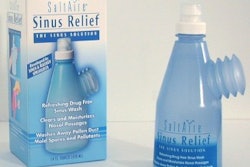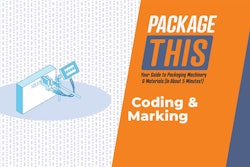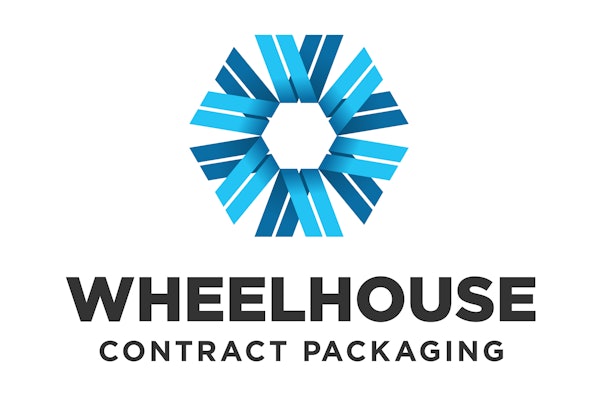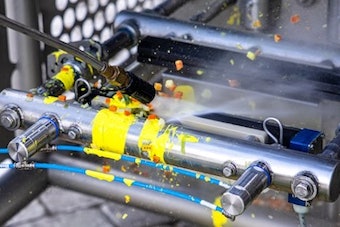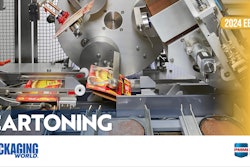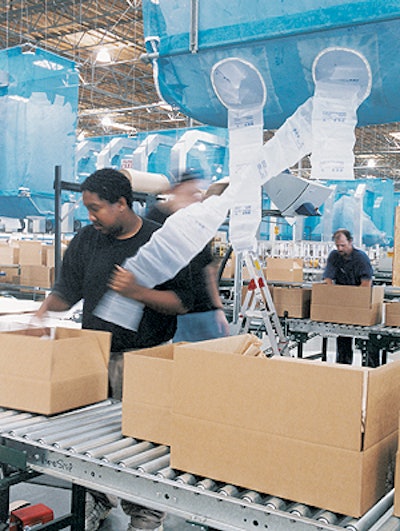
Manufacturers and marketers that frequently ship products to customers in single packages will find a wealth of information in the Guide to Packaging for Small Parcel Shipments, compiled by the Transport Packaging Committee of the Institute of Packaging Professionals, Naperville, IL, and published by the organization. Copies of the guidelines are available for downloading from the IoPP Web site, www.iopp.org.
The publication is intended to serve those manufacturers that ship products in single shipping units weighing not more than 150 lb each. According to the guide, it’s also written only from the perspective of domestic shipments.
In developing the tips, the committee members analyzed the carrier shipping environments that typically affect small parcels. For example, the report notes that most parcel carriers use “hubs” or “depots” where packages are often sorted before being loaded onto the next transport vehicle. Even for relatively short-distance shipments of 300 miles, for example, some carriers may load and reload packages as frequently as five times, and they may expose the parcel to several different types of sorting arrangements, from manual to automatic.
Primary hazards
The report lists the principal potential hazards as shock, vibration, compression, extreme climate conditions, and altitude. It says that most experiences of shock are equivalent to drops from a relatively low height. “About 5% of all shipments receive at least one impact above an equivalent drop height of 30 inches,” the guide states.
According to the report, studies show that most parcel shock is caused by rotational drops on edges, somewhat less often on corners. Relatively few flat or perfect edge-corner drops are encountered. Most impacts occur on the bottom surface, corners, or edges.
Because of automated sortation systems, small parcel carriers cannot honor orientation or shock labels or “Keep Upright” cautions. Packages will typically travel in the most stable orientation, usually the parcel’s lowest center of gravity. This helps packages from tumbling down chutes or slides, while it also keeps the sortation/scanning label facing up for overhead scanning.
Similarly, stacking of parcels is unavoidable, either in hubs or in transport. Thus, the report notes, “orientation labels ‘Do Not Stack’ and ‘Top Load Only’ cannot always be honored.” Handlers typically use an interlocking stack pattern rather than column stacking, and this can reduce corrugated box stacking strength by up to 50%, compared to column stacking.
General tips
Although the guidelines recommend package testing for regularly used containers and contents, it acknowledges that many packs are miscellaneous items packed in a limited number of container sizes. In the absence of company guidelines, the report suggests a minimum of two inches of protective space between the product and the container wall, although more fragile items should have greater clearance to the package walls or to other items inside.
In selecting a container, a general rule is that the product to be packed should not weigh more than 50% of the maximum allowable weight of the box maker’s certificate. In a corrugated container, a box certified as 200# burst or 32 ECT (Edge Crush Test) has a maximum allowance gross weight limit of 65 lb for truck or rail shipments. For small parcels, the report suggests those same containers not exceed 30 lb for best performance.
The report also explains that corrugated board retains only about one-half its strength when exposed to 85%-humidity conditions, compared to the test level of 50% humidity. Also boxes under a compressive load (stacked on a pallet) for one week lose about one-third of their original machine-measured compression strength.
The report also discusses a variety of other types of shipping containers, from envelopes to tubes and bags. At the end, the report lists a variety of resources, from published articles to books and standards for manufacturers to use.
